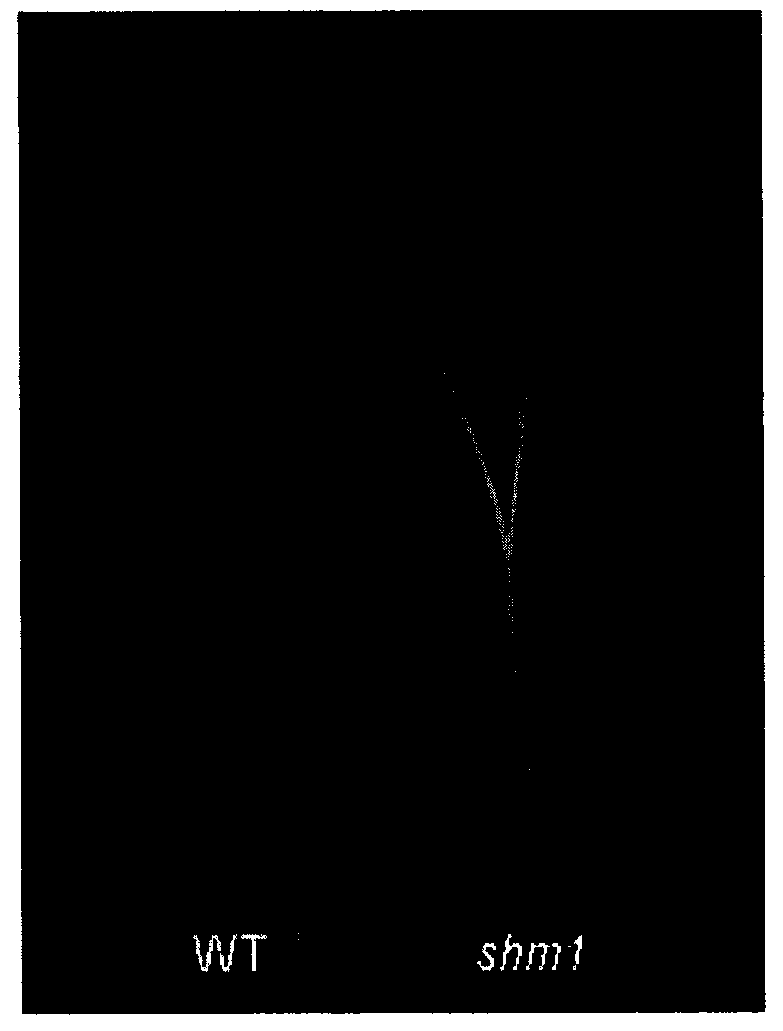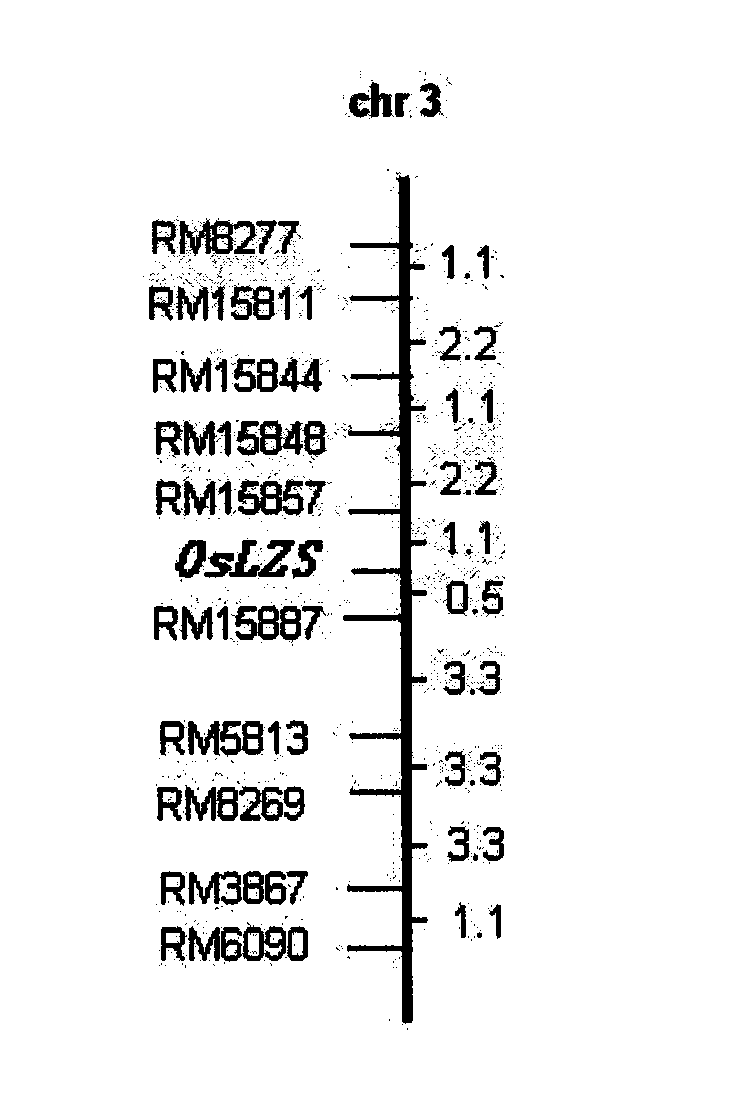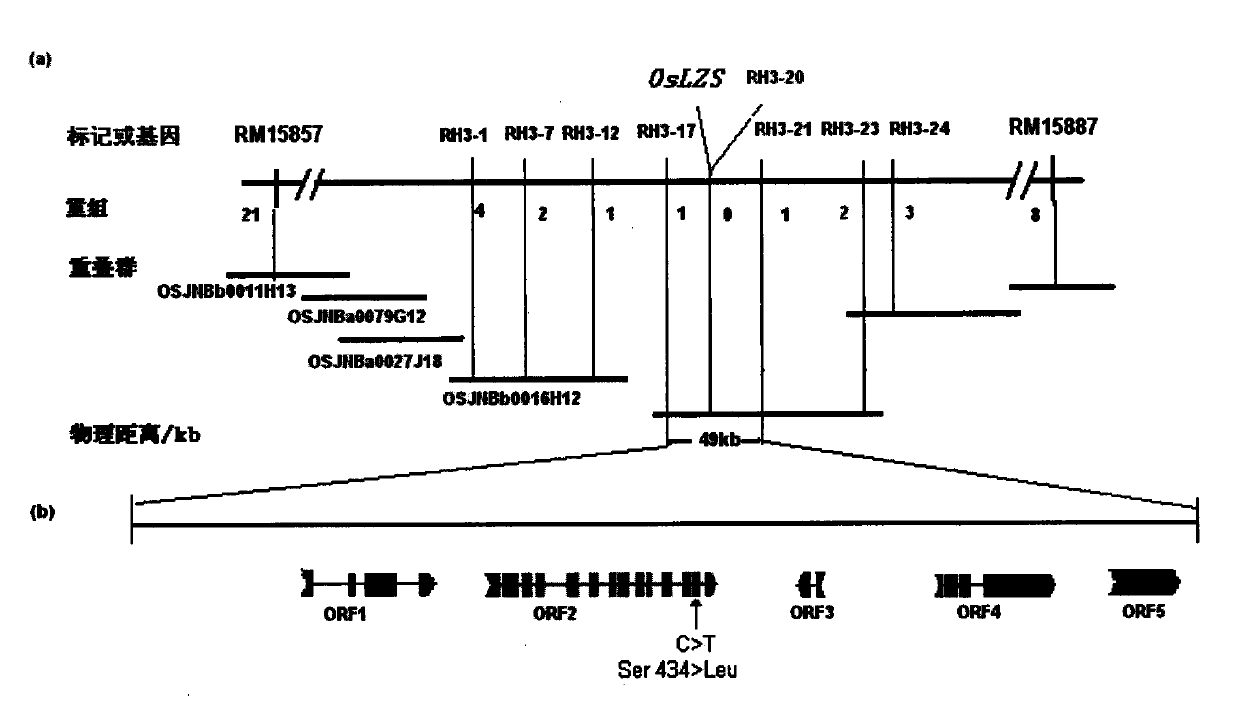Rice serine hydroxymethyl transferase protein and function of coding gene thereof
A serine and gene encoding technology, applied in the field of plant genetic engineering, can solve problems such as difficult gene function research, and achieve the effect of broad application prospects
- Summary
- Abstract
- Description
- Claims
- Application Information
AI Technical Summary
Problems solved by technology
Method used
Image
Examples
Embodiment 1
[0028] Map-position cloning of embodiment 1, LZS gene
[0029] 1. Isolation and genetic analysis of the rice lzs mutant
[0030] The mutant was discovered from the tissue-cultured progeny of Zhonghua 11. From the second-leaf stage, the new leaves turned white, and the leaves gradually withered at the three-leaf stage (attached figure 1 ). In the T1 generation, the segregation ratio of wild-type phenotype plants and mutant plants was 35:13, in line with 3:1 (χ 2 c =0.032 0.05 =3.84) segregation relationship, the T1 generation seeds were harvested from a single plant, and 10 individual plants were randomly selected to plant the T2 generation, and 3 strains of the T2 generation strains showed wild-type phenotypes, no longer segregated, and 7 strains of plants The phenotypes were segregated, and the segregation ratio between wild-type phenotype plants and mutant plants was 3:1, suggesting that the mutant was controlled by a pair of recessive nuclear genes.
[0031] 2. Cloning...
Embodiment 2
[0040] Example 2: OsSHM1 functional complementation experiment
[0041] 1. Complementary carrier construction
[0042] Functional Complementary Fragment Select a DNA fragment of about 6.8 kb in total, including the entire ORF of the candidate gene LZS, the 5'UTR of about 2.1kb before the gene translation initiation codon ATG and the 3'UTR of about 660bp after the termination codon TAA, for the construction of a complementary vector . The amplification primers are:
[0043] 5'-AGCAC GTC GAC CAAAAGCAGGCTTACTGCCACAAAG-3' (SEQ ID NO: 19)
[0044] 3'-GTCCAC AGATCT CATATGCCTCTTACTCTCACAGTTG-3' (SEQ ID NO: 20)
[0045] The amplified product contains Sal I and Bgl II restriction sites for ligation to the pCAMBIA1301 vector. PCR amplification amplification system (50 μL): 25 μL of 2×Primer STAR GC buffer, 8 μL of dNTPs (2.5 mmol / L), 1 μL of each primer (10 mmol / L), 1 μL of TaKaRa Primer STAR Taq (5U / μL), DNA ( 50ng / μL) 1.5μL, sterile water 12.5μL. PCR amplification was perfor...
example 3
[0056] Example 3: Determination of photosynthetic pigment content
[0057] The fresh leaves of mutant lzs and wild type Zhonghua 11 with the same growth at the second leaf stage were taken respectively, and their chlorophyll content was measured. The results showed that due to the mutation of leaf color, the content of chlorophyll a, chlorophyll b and carotenoids of the mutant lzs at the second-leaf stage were significantly lower than those of the wild type, but the ratio of chlorophyll Chla / Chlb had no significant difference (attached Figure 8 )
PUM
 Login to View More
Login to View More Abstract
Description
Claims
Application Information
 Login to View More
Login to View More - R&D
- Intellectual Property
- Life Sciences
- Materials
- Tech Scout
- Unparalleled Data Quality
- Higher Quality Content
- 60% Fewer Hallucinations
Browse by: Latest US Patents, China's latest patents, Technical Efficacy Thesaurus, Application Domain, Technology Topic, Popular Technical Reports.
© 2025 PatSnap. All rights reserved.Legal|Privacy policy|Modern Slavery Act Transparency Statement|Sitemap|About US| Contact US: help@patsnap.com



